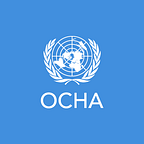COP26 and the aid community
COP26, led by the United Nations, began this week in Glasgow, UK. Here are eight things to know about this critical climate conference.
1.COP26 is the twenty-sixth meeting of the Conference of the Parties that signed the United Nations Framework Convention on Climate Change — a treaty agreed in 1994.
2.The treaty aims to cut emissions of greenhouse gases, which are heating up the Earth’s atmosphere, to prevent further global temperature increases.
3.In 2015, the world signed up for the Paris Agreement, under which countries committed to keep the global temperature increase to below 2 °C and try to limit it to 1.5 °C.
4. The world is experiencing more extreme weather events, such as record-breaking heatwaves, forest fires and floods. Because of climate change, these events are becoming more extreme. They are expected to become catastrophic if global temperatures increase by more than 1.5 °C, but even more so for people living in low-income countries.
5. Those people living in low-income countries are less responsible for greenhouse gas emissions, particularly carbon dioxide, which is released when fossil fuels such coal and oil are burned.
6. Low-income countries need money and support to help reduce their emissions and adapt to living with a changing climate.
7. In many of these countries, humanitarian aid workers are on the front lines of the climate emergency. In 2020, we already had aid appeals for 12 of the 15 countries most vulnerable to and least ready to adapt to climate change.
8. In 2009, developed countries responsible for most of the emissions committed to mobilize US$100 billion per year in climate finance to developing countries. This was reaffirmed as part of the 2015 Paris Agreement. However, the developed countries have lagged in fulfilling the promise. According to news reports, the latest diplomatic effort, led by Germany and Canada, aims to pull together the required funding by 2023, three years after the deadline established by the Paris Agreement.
Three things the aid community will do at COP26
1.Drawing world leaders’ urgent attention to the fact that they will not be able to keep up with the number of climate change-related humanitarian crises, and advocating for more resources to support vulnerable people.
In this statement, members of the Inter-Agency Standing Committee urged Governments at COP26 to step up support to people most at risk and vulnerable to the devastating effects of the climate crisis.
They said: “Humanitarian organizations are committed to being part of the solution, however, the extent of the scale and impact of the climate crisis is more than humanitarian organizations can address alone.”
Earlier this year, OCHA launched #TheHumanRace campaign for World Humanitarian Day to mobilize global support for low-income countries vulnerable to climate change. As part of the campaign, some 570,000 people in 183 countries signed up for a physical challenge on the exercise app Strava, logging physical activity in solidarity with vulnerable people at risk of climate change.
2. Mobilizing a joint effort to enhance response to climate crises and reduce the aid community’s carbon footprint.
To guide responses to climate crises, the International Committee of the Red Cross and the International Federation of Red Cross and Red Crescent Societies developed a Climate and Environment Charter for Humanitarian Organizations.
The charter includes seven commitments aimed at shaping response to suit affected people’s needs and helping them adapt. It also spells out ways to reduce the aid community’s greenhouse gas emissions and become more environmentally sustainable. Several aid organizations have signed the charter.
OCHA and the UN Environment Programme’s Joint Environment Unit (JEU) are coordinating efforts to reduce humanitarian organizations’ carbon environmental footprint and promote risk-informed, forward-looking action.
The Nexus Environmental Assessment Tool (NEAT+) is designed to rapidly identify the environmental risks of humanitarian projects in rural and urban areas. An example of such risks is the impact of a camp for internally displaced people on nearby water resources. NEAT+ also provides organizations with ways to reduce their environmental impact.
The JEU is also using artificial intelligence to document evidence of past environmental change in climate-fragile humanitarian hotspots and identify ways to adapt to projected climate change. This year, the JEU produced projections for Burundi, Chad and Sudan that could help make affected people more resilient. Some of the actions would include promoting reforestation and providing clean energy resources and sustainable water solutions to vulnerable communities, refugees, internally displaced people and host communities
3.Showing how it is joining global efforts to anticipate and prevent the disastrous effects of climate change and to support vulnerable communities, especially those in low-income countries.
Various aid organizations will participate in and host several side events at COP26 to demonstrate how they are helping poor countries deal with extreme climate events.
For example, OCHA, the UN Office for Disaster Risk Reduction and the World Meteorological Organization will host an event to show how analysing forecast information, predicting needs and acting early can prevent suffering. The humanitarian community achieved this in 2020 by helping more than 200,000 people prepare and protect themselves before peak flooding hit Bangladesh’s Jamuna River.
This year, OCHA committed to providing $140 million to support similar efforts in other countries.
All events organized by the aid community at COP26 can be found here.
